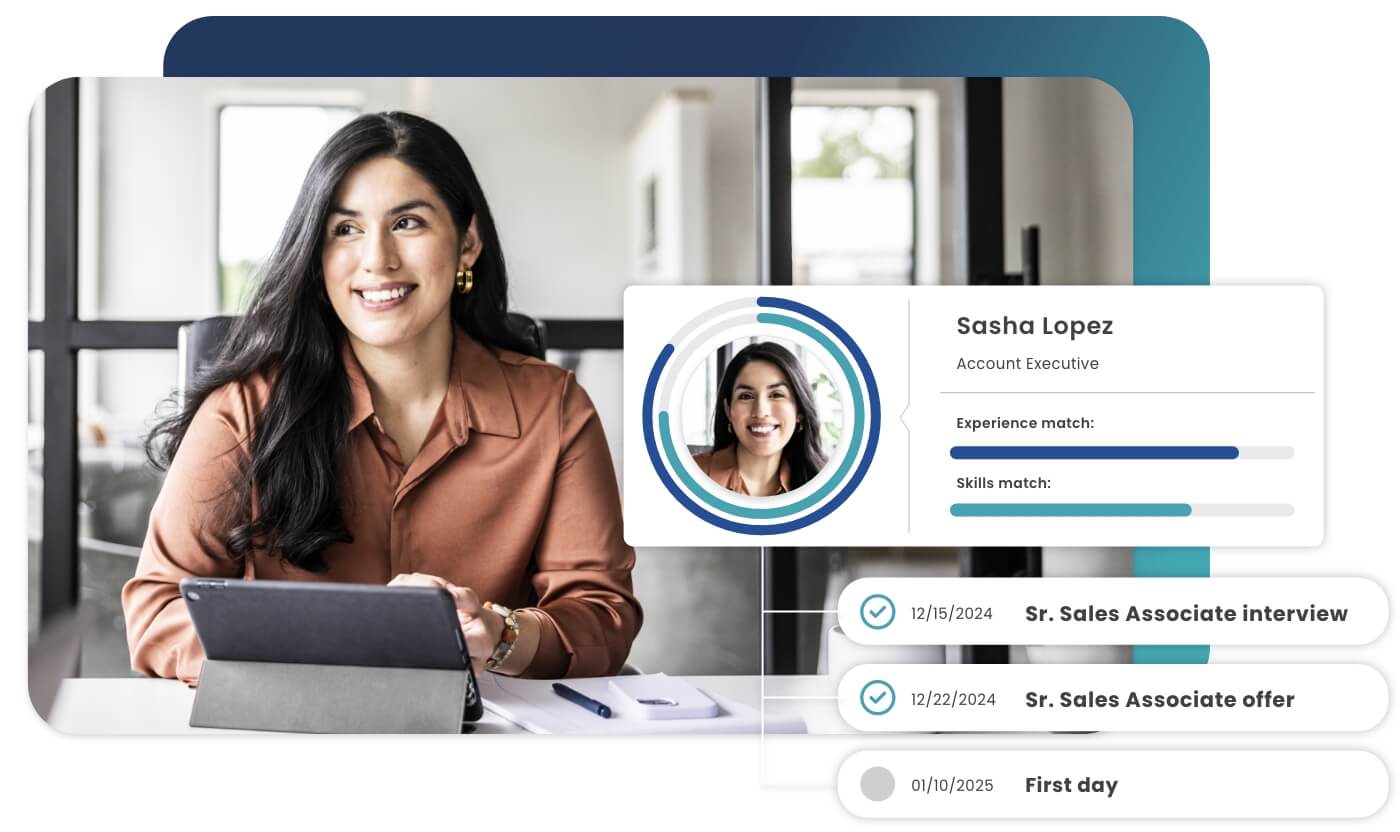

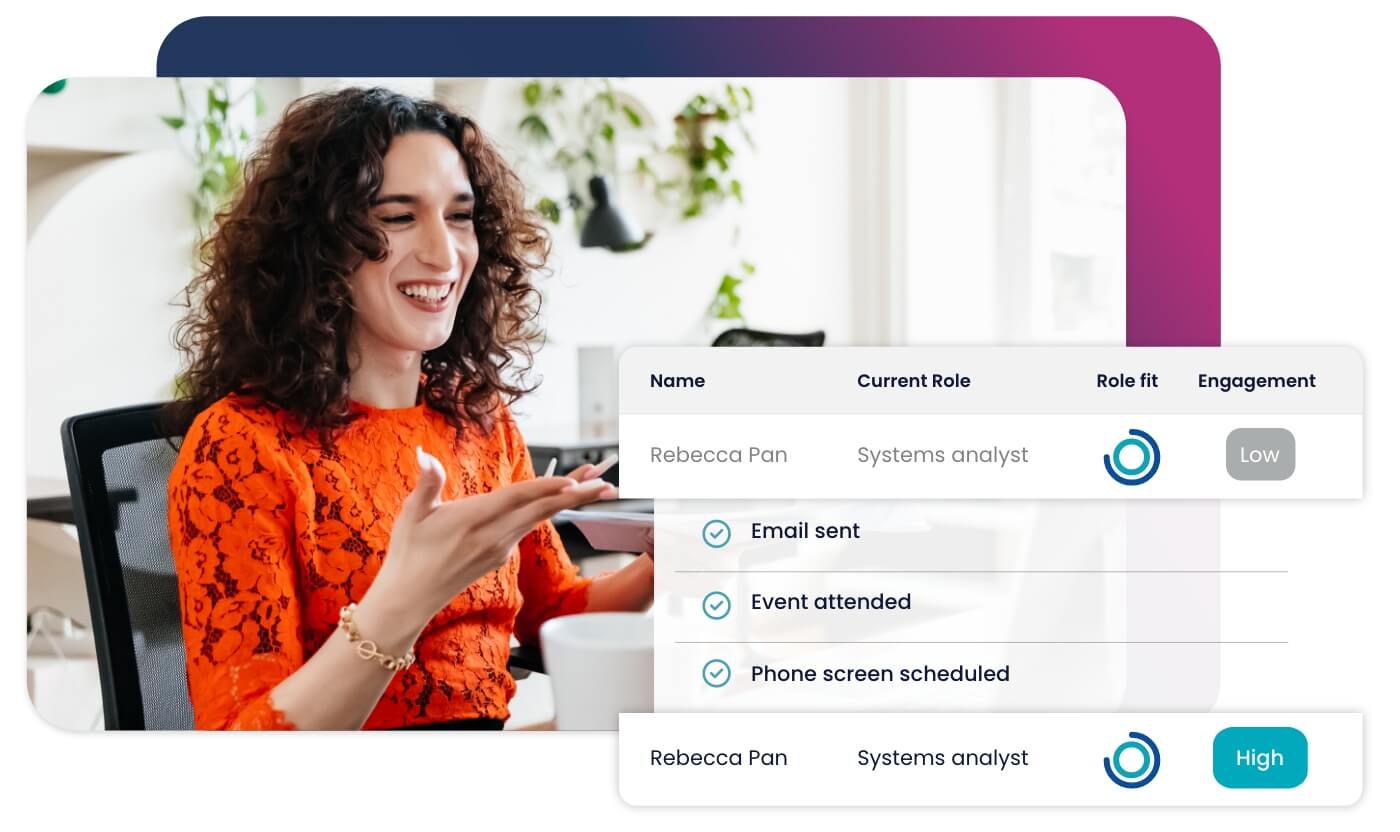
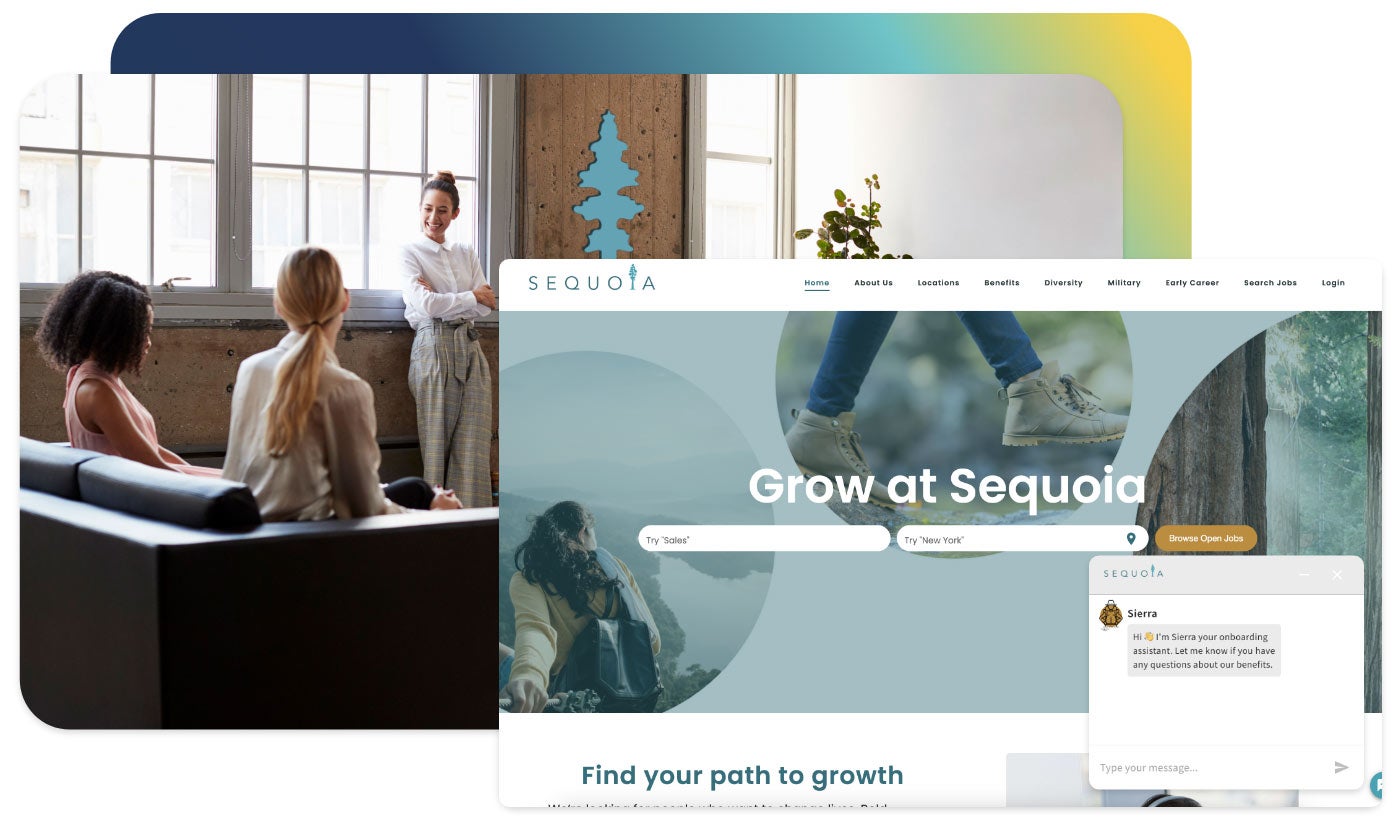


Accelerate hiring key talent to deliver care and exceed patient satisfaction.

Attract skilled candidates, speed up hiring and grow expertise in your workforce.

Simplify recruiting finance and banking talent with a platform for hard-to-fill roles.


Build a talent pipeline that engages and drives your business forward.


See how diverse and global enterprises use iCIMS to employ millions, drive innovation and connect communities worldwide.

Uncover unique market insights, explore best practices and gain access to talent experts across our library of content.

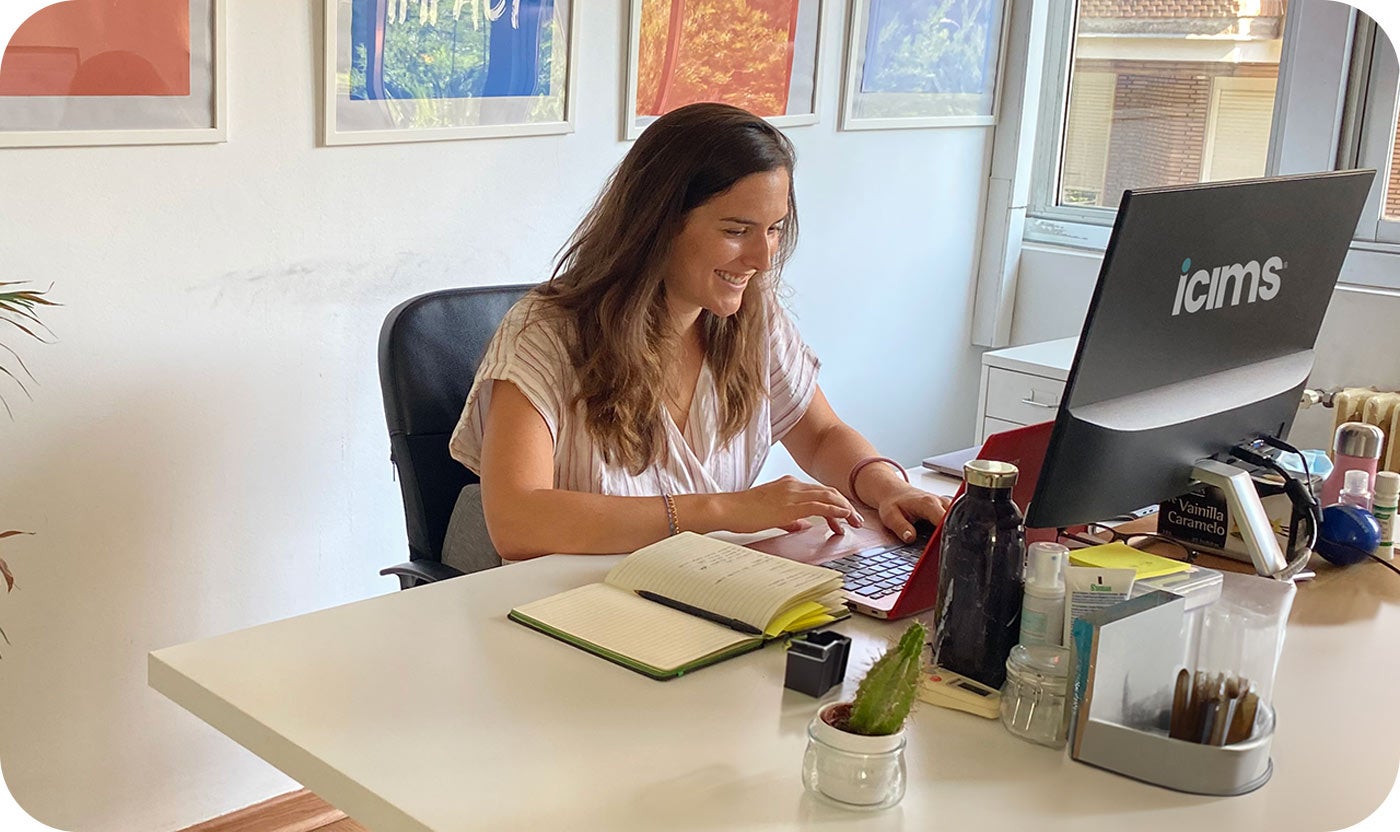
View press releases, media coverage, the latest hiring data and see what analysts are saying about iCIMS.
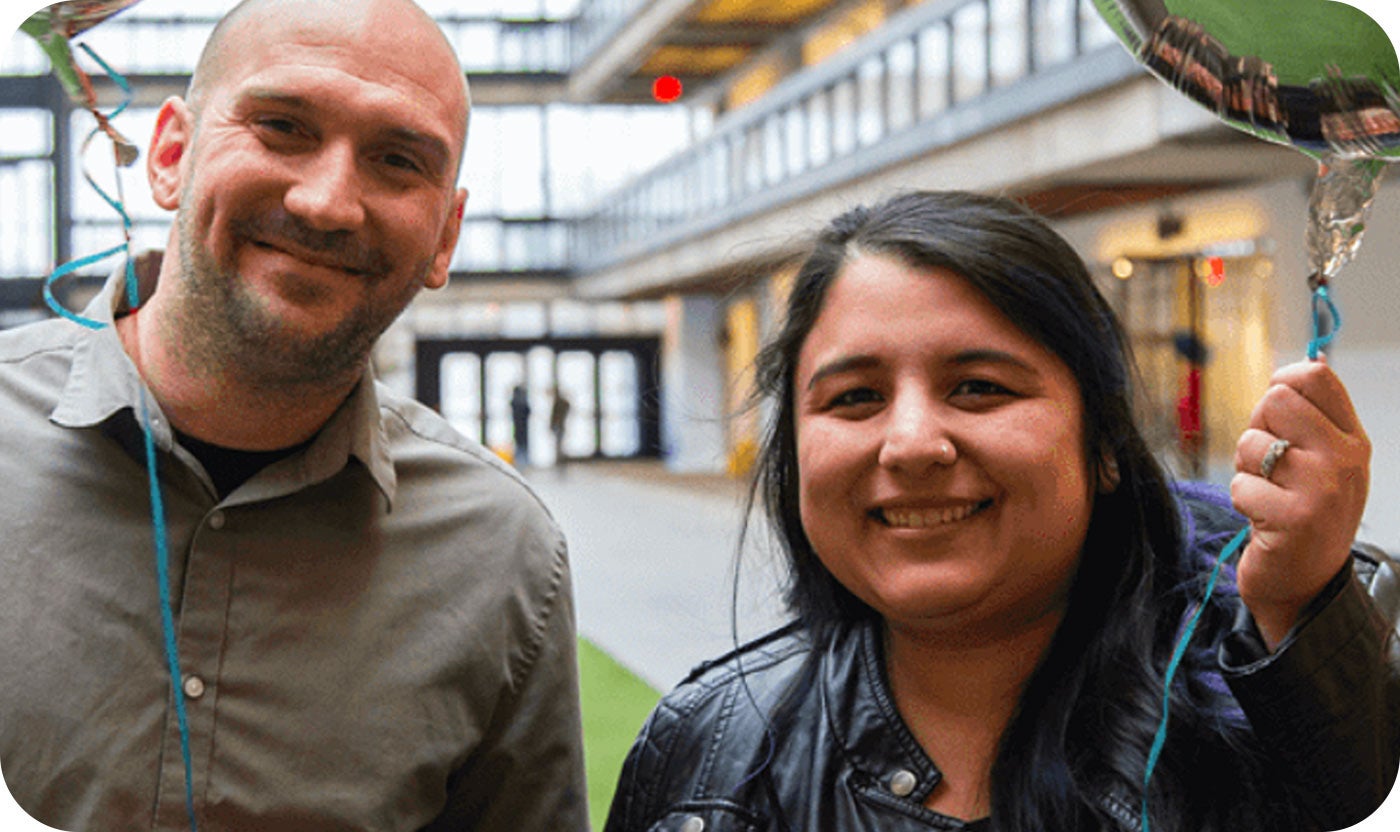
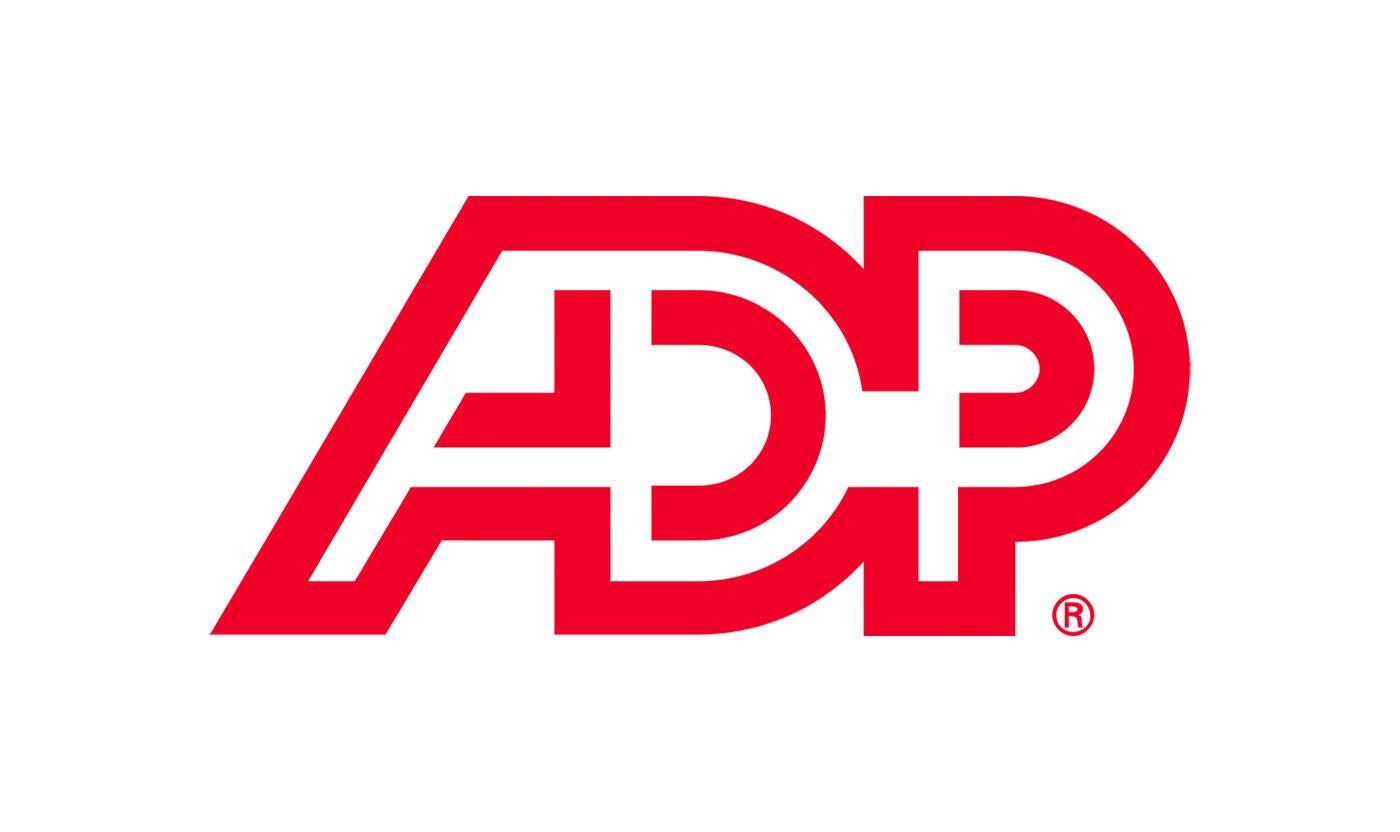
Streamline your tech stack and take advantage of a better user experience and stronger data governance with ADP and iCIMS.
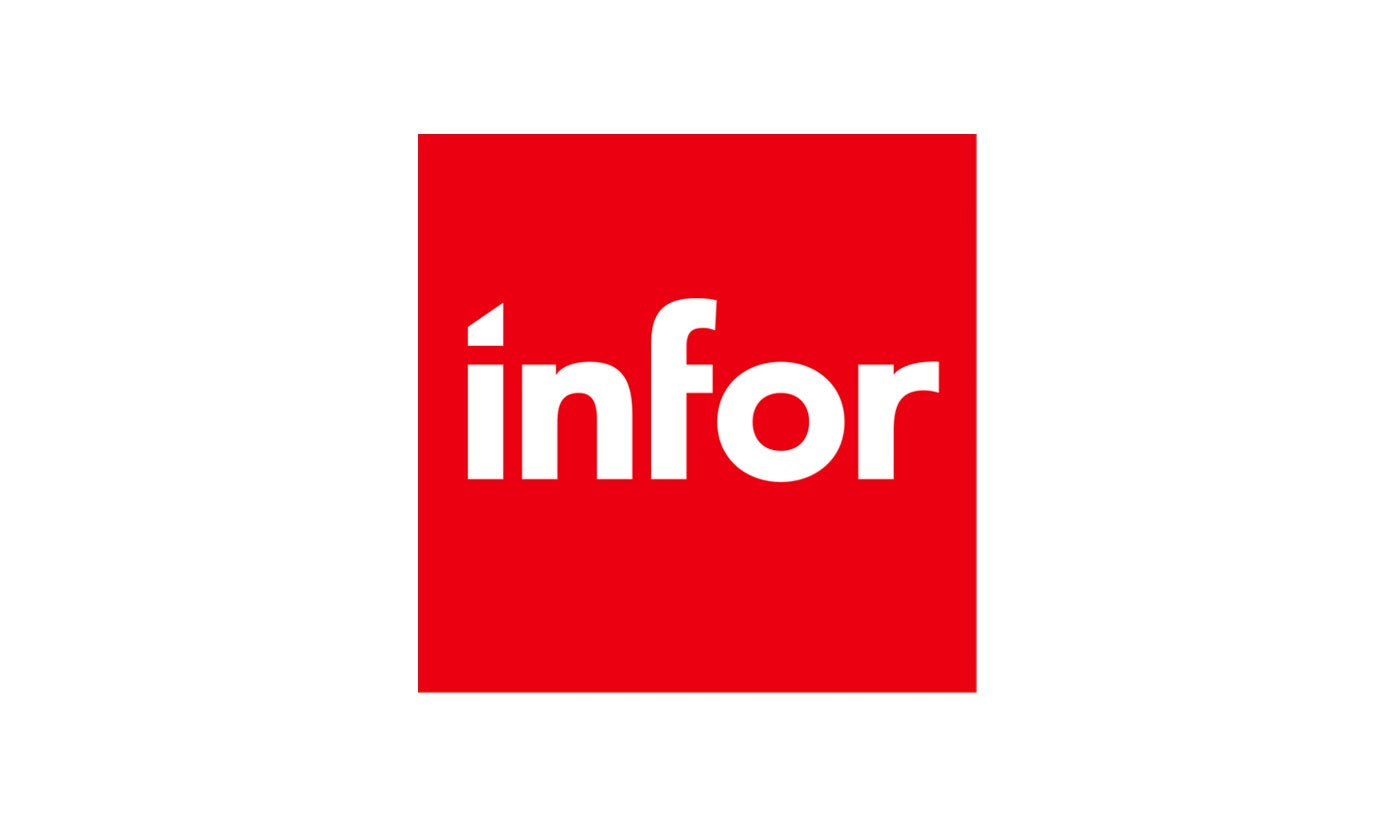
The combined power of iCIMS and Infor helps organizations strategically align their business and talent objectives.
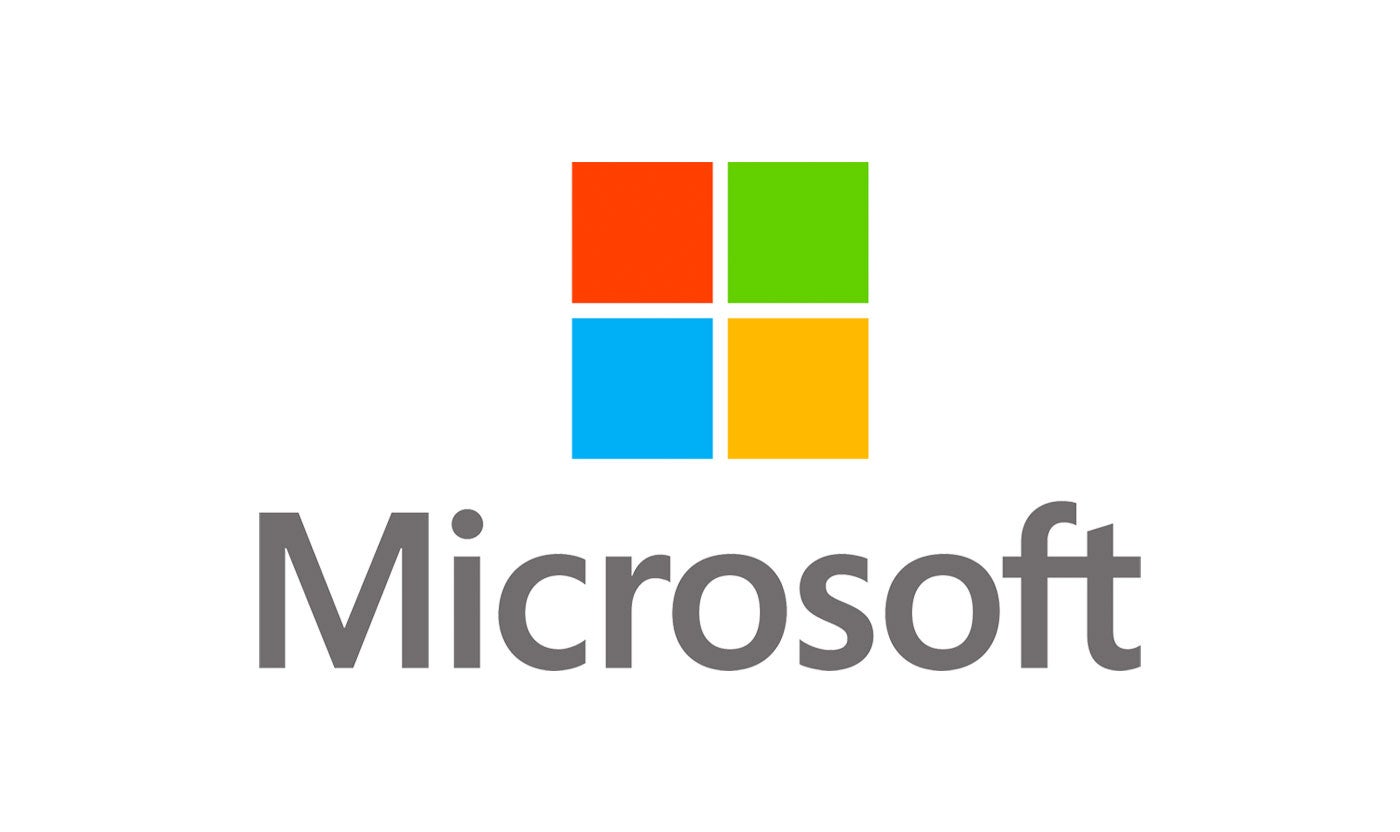
Our award-winning partnership with Microsoft is grounded in a shared desire to transform the workplace and the hiring team experience.
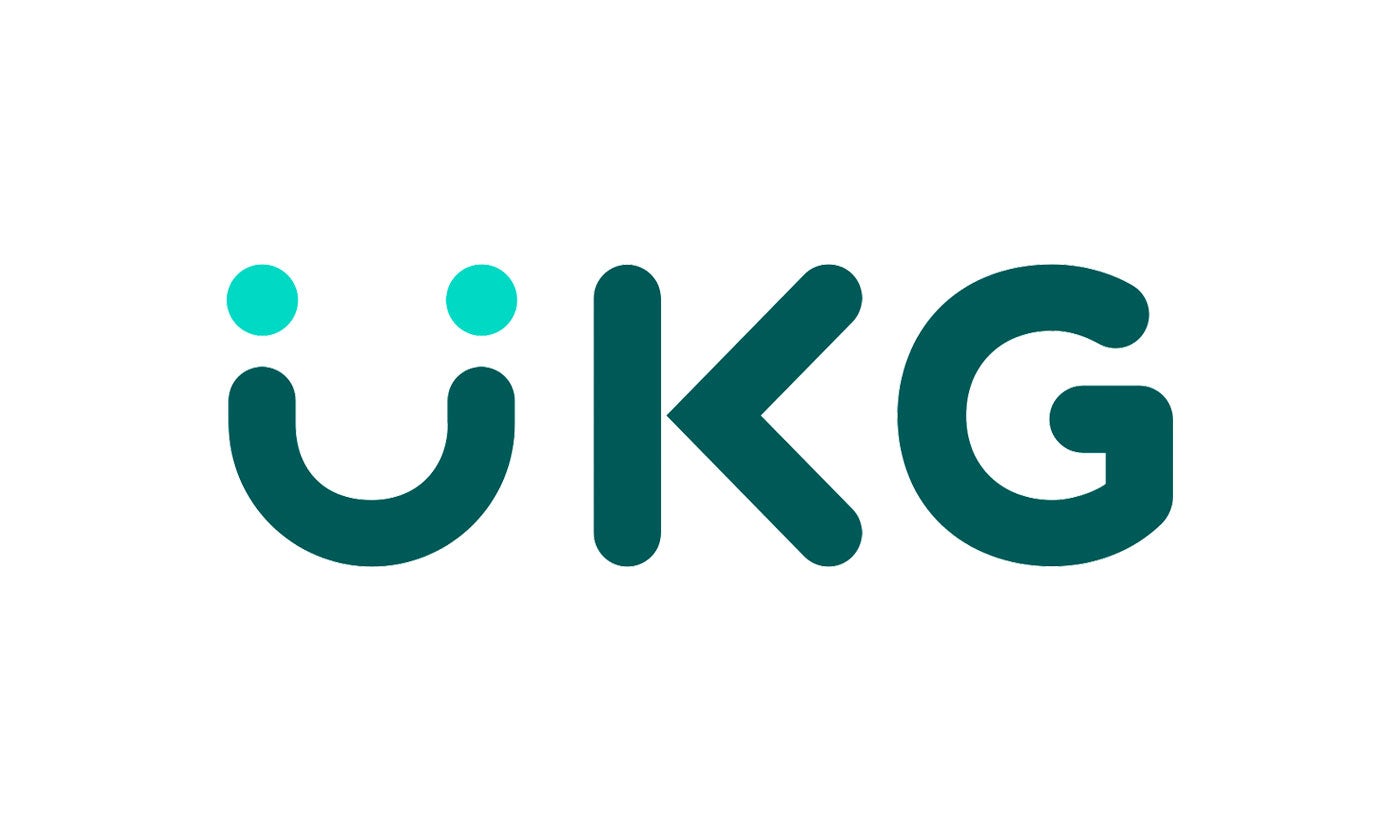
Our partnership with Ultimate Kronos Group (UKG) supports the entire talent lifecycle by bringing frictionless recruiting solutions to UKG Pro Onboarding.

Google “importance of belonging,” and you’ll quickly discover how critical it is for humans to feel connected to others. According to psychologist Abraham Maslow — whose hierarchy of needs maps out five levels of human essentials, starting with the most basic — belonging is not far above food and shelter and on the same plane as love.
But in the modern world of work, creating environments that foster that feeling of belonging and inclusion is often paid a lot of lip service but never put into action. Instead, a company might say it has a diversity, equity and inclusion (DEI) strategy and is committed to nurturing an inclusive workplace but fails to source more diverse candidates for leadership positions.
“It’s one thing to have representation at the entry-level positions, or to say that 20% of your intern class is from historically excluded groups (HEGs),” said Chinor Lee, director of DEI at iCIMS. “But it’s another when diversity higher up the hierarchy — like front-line managers or the people who are setting and executing the strategy of the organization — completely falls off the cliff.”
Lee went on to say that candidates will see the depth of an organization’s commitment to creating a diverse workforce when they show up for an interview, and nobody looks like them. The goal is to build strong, trusting relationships with candidates from HEGs with actions, not just words and promises. Candidates can see right through inauthentic messages that aren’t backed up by concrete action.
In our 2023 Workforce Report, nearly two-thirds (59%) of people ranked their company’s DEI initiatives as effective, yet most respondents don’t see DEI practices in place at work (such as pronouns, celebrations of different cultures, unconscious bias training or allyship programs). While belonging is fundamental at work, more than half of our survey’s respondents said they don’t feel either, with only 43% feeling a sense of belonging at work and 52% feeling valued by their primary employer.
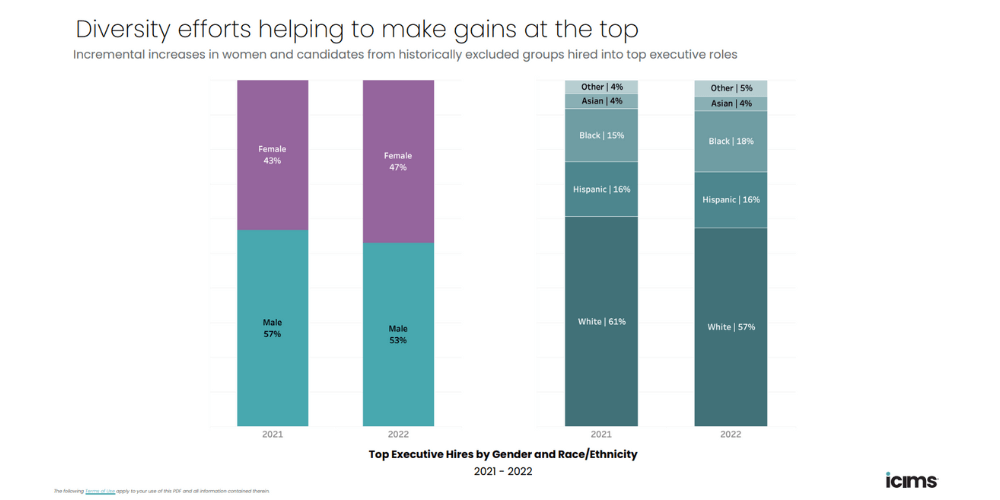
The absence of these practices — perhaps perceived as critical indicators of true inclusion — may be keeping some organizations from doing anything more than just scratching the DEI surface.
Don’t get us wrong: there’s been progress in workplace diversity in the last few years. In fact, diversity efforts may be helping to make recent gains at the top levels, according to a recent iCIMS survey, with incremental increases in women and HEG candidates hired into top executive roles. Notably, the share of women and black professionals has seen an uptick, with 4% and 3% YoY increases, respectively.
Today’s millennial and Gen Z workforce consider diverse and equitable hiring practices to be the bare minimum. In a hypercompetitive landscape, corporations realize that DEI isn’t just good ethics or even good PR. It’s simply good business. Research has shown that companies are 21% more likely to outperform their goals with more profitability when they have greater gender diversity on their teams.
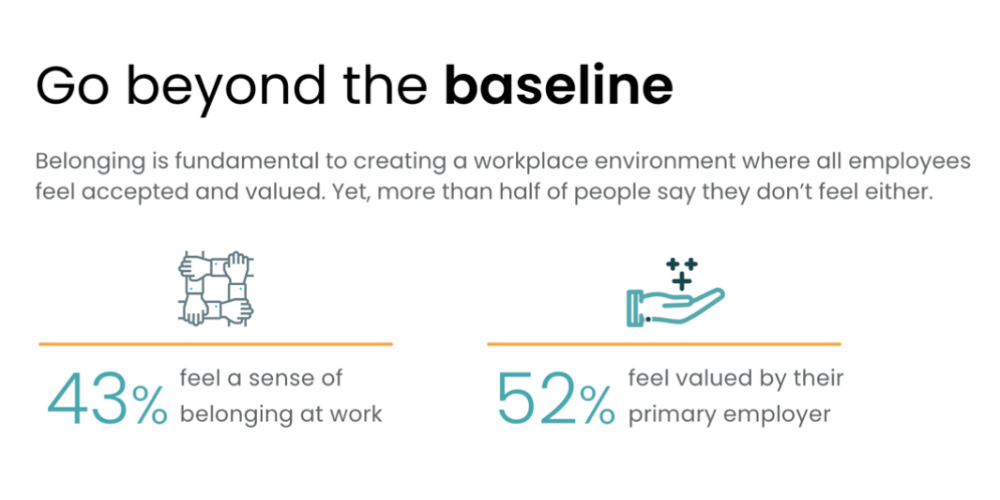
DEI is also a clear path to the engagement and retention necessary to build a strong, productive workforce, especially in an uncertain labor market. Studies have shown that organizations with diverse, inclusive workforces win. According to Deloitte, diverse organizations are 3.1 times more likely to adapt to change effectively and 2.6 times more likely to engage and retain their employees.
DEI should be regarded not as just one more task on recruiters’ plates but as a tool to help them navigate the challenging new hiring landscape. Let’s dig into how it’s done.
Okay, so we’ve made a compelling argument that DEI is not only a critical ingredient in your overall hiring strategy but needs to be baked into your company culture. So, what now? How can you improve our efforts?
We looked at how some of our customers are creating inclusive workplaces at different stages of the talent lifecycle.
To level the interviewing playing field, the talent team at Celanese, a global manufacturer, sends out a welcome video explaining what to expect during the process. Understanding how stressful the interview process can be, this approach not only helps minimize anxiety for HEG candidates but provides more opportunities for diverse talent to succeed and advance their careers.
Spectrum, the leading broadband and cable operator, is committed to getting military veterans back into the civilian workforce. The talent team uses employee-generated videos to let members of its veteran workforce talk about their experiences transitioning to civilian life. Those videos personalize the talent experience and provide transparency into what it’s like for a veteran to work for the company.
Leaders understand that the future of their business depends on creating a diverse workforce and that they must build more DEI-focused talent journeys as a result.
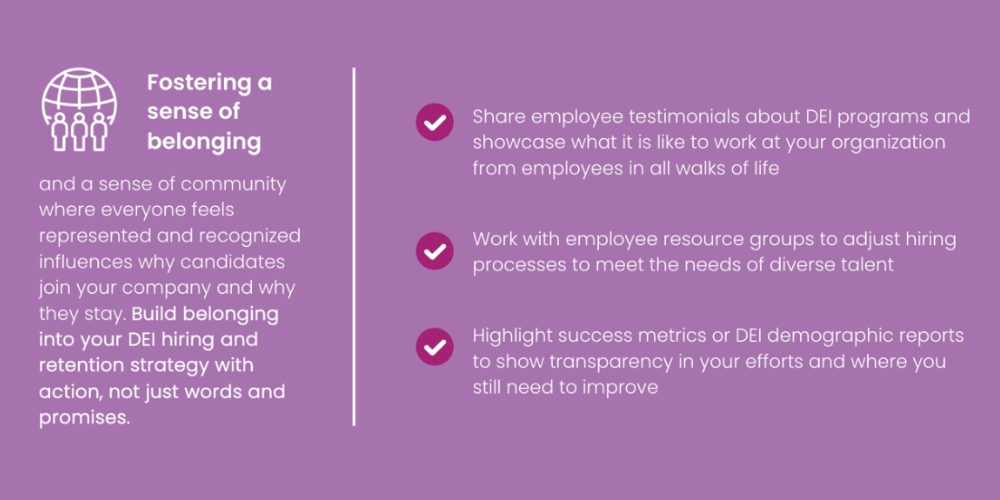
Setting aside all the numbers, how do you know if your efforts to create an inclusive environment are working? How do you quantify whether an employee feels like they belong with their team at your company?
“The challenging thing about belonging is that it can vary — by day, project and moment,” Lee said. Rather than relying on annual or semiannual engagement surveys, which capture where employees are at one particular moment and might change the next day, some companies are turning to pulse surveys for a quick check-in.
British retailer Marks and Spencer performs three pulse surveys each year that help managers and their teams measure employee engagement and adjust based on feedback. Tech giant, Microsoft, reported that the company conducts daily surveys of random sampling of employees about the company’s return-to-office plans to hear firsthand from employees what is and isn’t working.
No matter the approach, think of your DEI initiatives as a combined holistic process that ensures HR can source talent from a diverse pool of candidates, foster an environment for them to succeed and then support them through prolonged tenure at the organization. To do that, you need to get out of the DEI kiddie pool and jump into the deep end.

Amy brings a knack for storytelling and strategy to her role at iCIMS. A longtime journalist and marketing consultant, she is on a mission to make her content sparkle with details and clarity.
As an essayist, Amy’s writing has appeared in The Washington Post and Family Circle magazine. When not writing, you can find her going for long hikes in the woods with her goldendoodle, working in her veggie garden or researching her next travel destination – which has included spots like Hong Kong, the Greek islands and Newfoundland.




